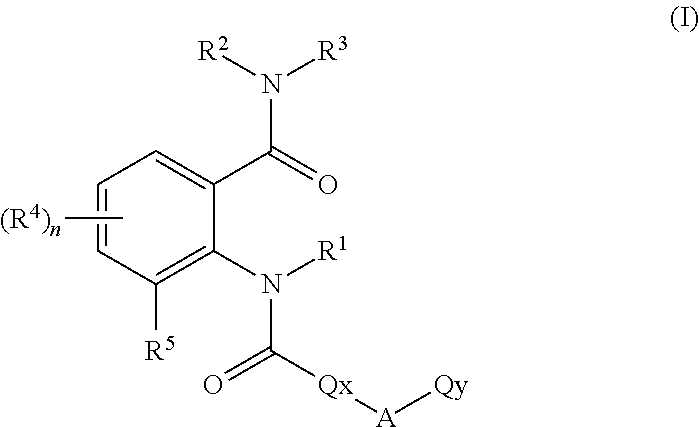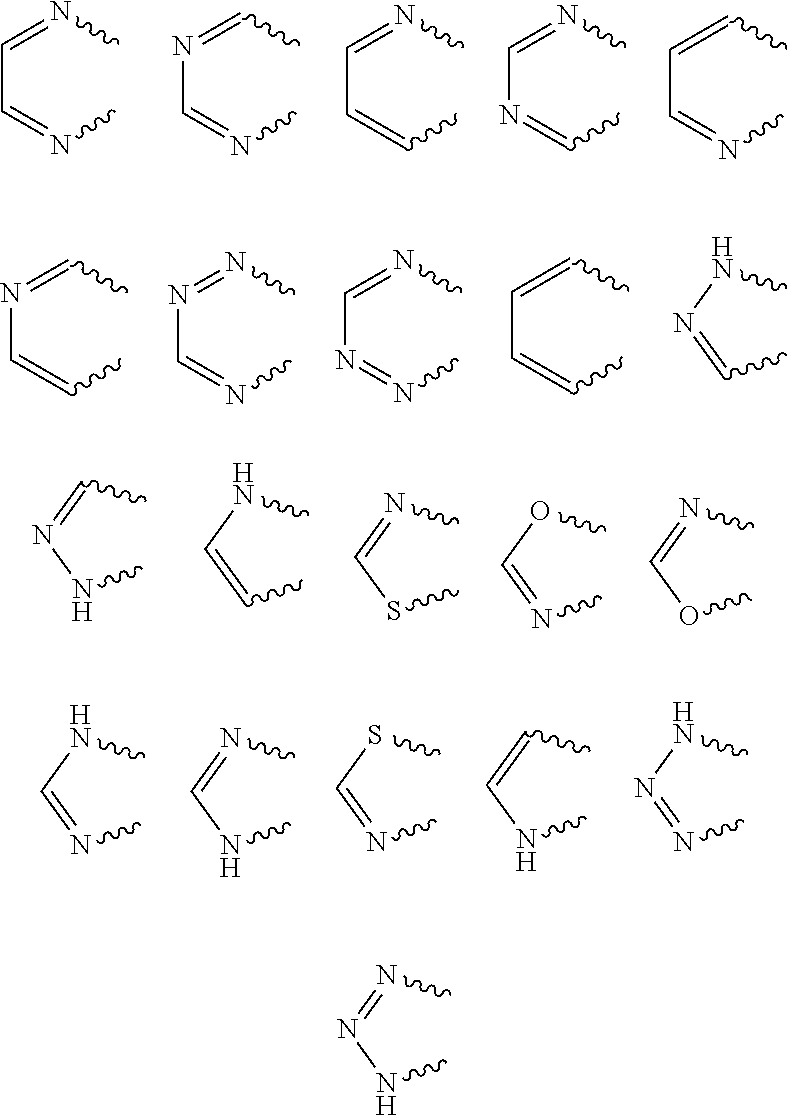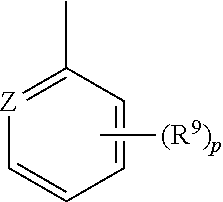Active ingredient combinations having insecticidal and acaricidal properties
- Summary
- Abstract
- Description
- Claims
- Application Information
AI Technical Summary
Benefits of technology
Problems solved by technology
Method used
Image
Examples
use examples
[0480]The expected action for a given combination of two active ingredients can be calculated according to S. R. Colby, Weeds 15 (1967), 20-22 as follows:
If
[0481]X is the kill rate, expressed in % of the untreated control, in the case of use of active ingredient A in an application rate of m g / ha or in a concentration of m ppm,[0482]Y is the kill rate, expressed in % of the untreated control, in the case of use of active ingredient B in an application rate of n g / ha or in a concentration of n ppm, and[0483]E is the kill rate, expressed in % of the untreated control, in the case of use of active ingredients A and B in application rates of m and n g / ha or in a concentration of m and n ppm,
then
E=X+Y-X·Y100.
[0484]If the actual kill rate is greater than that calculated, the kill rate of the combination is superadditive, which means that a synergistic effect is present. In this case, the kill rate actually observed must be greater than the value calculated from the above formula for the e...
example a
Myzus Persicae Test
[0485]Solvent: 78 parts by weight of acetone[0486]1.5 parts by weight of dimethylformamide
Emulsifier: 0.5 part by weight of alkylaryl polyglycol ether
[0487]To produce an appropriate active ingredient formulation, 1 part by weight of active ingredient is mixed with the stated amounts of solvent and emulsifier, and the concentrate is diluted with emulsifier-containing water to the desired concentration.
[0488]Cabbage leaves (Brassica oleracea) severely infested by the green peach aphid (Myzus persicae) are treated by spraying with the active ingredient formulation in the desired concentration.
[0489]After the desired time, the kill in % is determined 100% means that all aphids have been killed; 0% means that no aphids have been killed. The kill rates determined are entered into Colby's formula.
[0490]In this test, the following active ingredient combinations according to the present invention, for example, exhibited a synergistic enhancement in activity compared to the...
example b
Phaedon Cochleariae Larvae Test
[0491]Solvent: 78 parts by weight of acetone[0492]1.5 parts by weight of dimethylformamide
Emulsifier: 0.5 part by weight of alkylaryl polyglycol ether
To produce an appropriate active ingredient formulation, 1 part by weight of active ingredient is mixed with the stated amounts of solvent and emulsifier, and the concentrate is diluted with emulsifier-containing water to the desired concentration.
Cabbage leaves (Brassica oleracea) are treated by spraying with the active ingredient formulation of the desired concentration and populated with larvae of the mustard beetle (Phaedon cochleariae) while the leaves are still moist.
After the desired period of time, the kill rate in % is determined. 100% means that all beetle larvae have been killed; 0% means that none of the beetle larvae have been killed. The kill rates determined are entered into Colby's formula.
In this test, the following active ingredient combinations according to the present application exhib...
PUM
| Property | Measurement | Unit |
|---|---|---|
| Mass | aaaaa | aaaaa |
| Fraction | aaaaa | aaaaa |
| Fraction | aaaaa | aaaaa |
Abstract
Description
Claims
Application Information
 Login to View More
Login to View More - R&D
- Intellectual Property
- Life Sciences
- Materials
- Tech Scout
- Unparalleled Data Quality
- Higher Quality Content
- 60% Fewer Hallucinations
Browse by: Latest US Patents, China's latest patents, Technical Efficacy Thesaurus, Application Domain, Technology Topic, Popular Technical Reports.
© 2025 PatSnap. All rights reserved.Legal|Privacy policy|Modern Slavery Act Transparency Statement|Sitemap|About US| Contact US: help@patsnap.com



